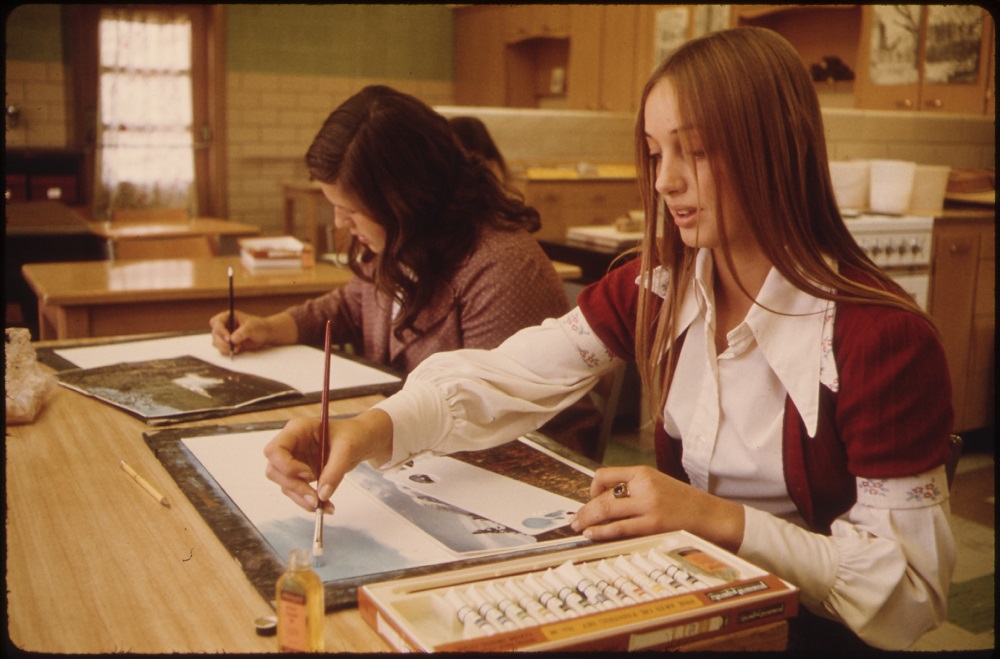How Art can lend a helping hand
Art can act as many things. As catharsis. As investment. As expression. As experience. Combining these, art can thus produce the formula to benefit those that are less fortunate.
Photo by James Rowbowtham
Art can act as many things. As catharsis. As investment. As expression. As experience. Combining these, art can thus produce the formula to benefit those that are less fortunate.
And those that are less fortunate include disabled people. Research conducted by Dr. Margaret Taylor in 2005 found that art was instrumental to the identity-forming process of disabled people. She concluded that art was a method of empowerment for young disabled people because it allowed them to have a sense of fulfilment by addressing ‘negative and oppressive perceptions of disability via their artwork.’
There are a plethora of disabled people who use art as a channel for self-expression. So much so that disability in the arts is breaking into the mainstream – we need look no further than the fourth plinth in Trafalgar Square, London.
From 2005-2007 we saw Alison Lapper Pregnant by Marc Quinn – a marble sculpture of the ever-intrepid disabled artist Alison Lapper, who is herself a spokesperson for the empowerment and autonomy of disabled people. This piece was so well received that Marc Quinn was commissioned to remake the sculpture on a grander scale for the closing ceremony of the London 2012 Olympics. And from 2010-2012 we also saw Nelson’s Ship in a Bottle by Yinka Shonibare – the British-Nigerian conceptual artist who suffers from a disability that renders half of his body paralysed. But that does not mar his talent – in spite of his disability, he was nominated for the Turner Prize for his Double Dutch exhibition in 2004.
And Dr. Taylor’s findings lend intuitive appeal to the growing field of art therapy. Combining psychotherapy with art – it is a tool that can be used to help not only disabled people, but one that is designed to tackle other social issues too. Dr. Sarah Deaver, the President of American Art Therapy Association defines art therapy as:
‘A mental health profession in which an art therapist facilitates the client's use of art media and the creative process to reach a number of treatment goals or personal goals such as exploring feelings, reconciling conflicts, improving self awareness, behaviour management, social skills.’
The method works on the very simple principle of allowing individuals to express themselves non-verbally. It avoids the defences and social desirability biases that are naturally prevalent in verbal therapy. A person would be hesitant to vocalise exactly how they feel – but art therapy (as Dr. Deaver puts it) ‘bypasses this’ as a ‘rich avenue for self-expression.
There are several galleries and organisations that are structured around helping some of these less fortunate individuals. Shape Arts, a disability-led arts organisation aims to empower disabled people through their holistic mission – by including disabled people within the arts sector and encouraging them to have an influential role in to too. Conquest Art, a charity with a similar mission that uses art groups to help disabled people ‘regain confidence in their abilities and to find happiness through self-expression.’
The Free Space Gallery as well as the London Art Therapy Centre both promote well-being via the arts, utilizing the effective method of art therapy to showcase the work of artists that would otherwise be under-represented. PIP online helps adults with learning disabilities on a range of different services – of which include the arts.
There seems to be a recurring theme of promoting self-expression. When one is given the freedom to communicate emotion through art – they are given the means to not only address their own personal issues, but to also gain the confidence to tackle them. Art is beautified through its inclusivity. It will not degrade or demean those with social issues but serve as a sanctuary for them. And with the numerous organisations that provide them with support, it seems that the future certainly looks brighter.



